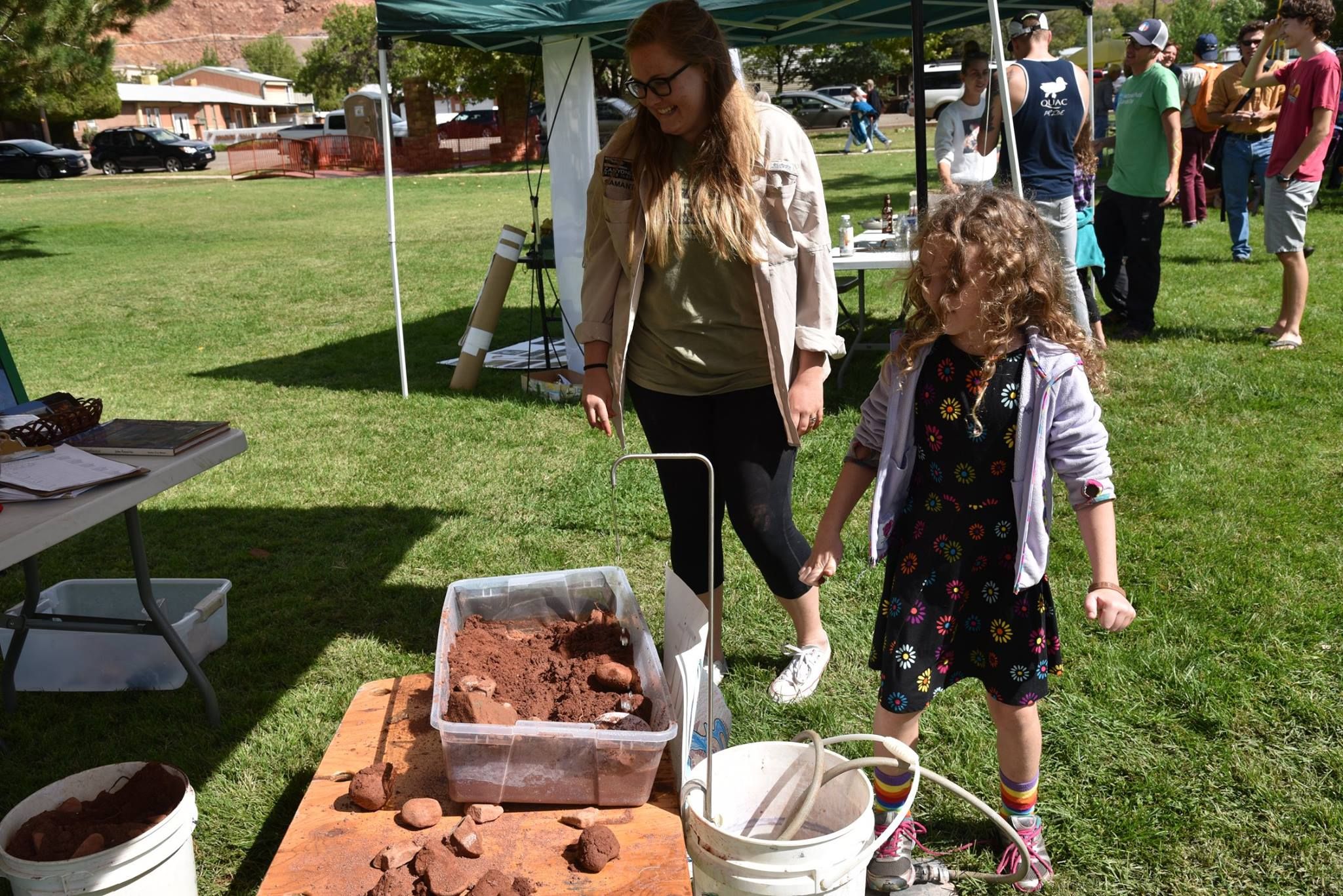Some information may be outdated.
Hike with local geologists and learn why the rocks are red. Watch a film that explores the night skies and learn how the threat of artificial light can impact our community.
Enjoy several days of a variety of science-themed events focused on the Moab region during the 4th annual Moab Festival of Science, from Wednesday, Sept. 18 through Sunday, Sept. 22.
The festival aims to “tie together people and events that the community may not normally have access to,” said local scientist Erika Geiger.
Many different branches of science will be represented, including biology, river science, geology, soil science, and astronomy with over 12 events such as presentations, tours, films, kid-focused demonstrations and nature walks scheduled throughout the weekend.
“The festival encourages people in the community to learn more about the natural world that surrounds it,” said Dr. Benjamin Burger.
Burger is a geology professor at Utah State University and will lead a hike along Corona Arch trail to discuss local geology on Sunday at 11 a.m.
The festival allows scientists to interact with the public, so people can “ask questions, feel less intimidated by science, and to gain a deeper understanding on an informal basis,” said Geiger.
The original idea for a regional science festival was brainstormed by Sasha Reed and Theresa McHugh, a research ecologist and a former postdoctoral researcher with the U.S. Geological Survey in Moab.
In 2016, the first-ever Moab Science Festival was launched to great success. In fact, many events from that original year have been so popular they are now annual traditions.
Two of these yearly events are on Friday’s agenda, which includes a guided tour of the Intrepid Potash Mine at 9 a.m. and a Science Mingle with local educators and scientists.
While the event began with a hyper-local focus on Moab scientists, the festival now has expanded to include regional scientists and topics.
The region has a “cross-section of public land and other agencies,” said Hannah Russell, a local archaeologist. Russell noted that this even allows the scientific community to collect resources and learn from each other.
Russell said that citizen scientists will provide site steward visits with four unique archaeological sites within the local area.
“Rock art can provide a visual version of archaeology that crosses time and space, and this allows people to connect to the landscape,” said Russell.
Participating scientists come from organizations across the state, including the Bureau of Land Management, USGS, National Park Service, Colorado Plateau Dark Sky Cooperative, Museum of Moab, Grand County Library, Utah Friends of Paleontology, Utah Department of Natural Resources and the U.S. Department of Energy.
Tim Riley, a fan of the science festival from Price, Utah, said he is impressed “that a small community like Moab can have enough engaged citizenry to do a science festival.”
This year’s keynote presentation will be Jenny and Mike Feibig, hosted in conjunction with the USU Center for Colorado River Studies and American Rivers on Sept. 20.
“River science helps us to understand the river and the ecology around it. Humans have more tendency to protect something that they understand and connect with,” said Mike Feibig.
Other events during the festival include a guided geology walk along Moab’s Old Mail Trail, a hands-on experimental presentation about desert ecosystems for children, and a presentation on how carbon dioxide emissions can be converted into byproducts such as potable water.
Free tickets will be available at the Moab Information Center and the Grand County Public Library the Intrepid Potash Mine Tour and the geology walks at Mill Creek and Corona Arch.
For a full schedule of events, visit www.moab-scifest.org, facebook.com/moab.scifest or contact moab.scifest@gmail.com.
4th Annual Moab Festival of Science
Wednesday, Sept. 18, through Sunday, Sept. 22
For more information and a full schedule of events, go to www.moab-scifest.org
Appreciate the coverage? Help keep local news alive.
Chip in to support the Moab Sun News.





